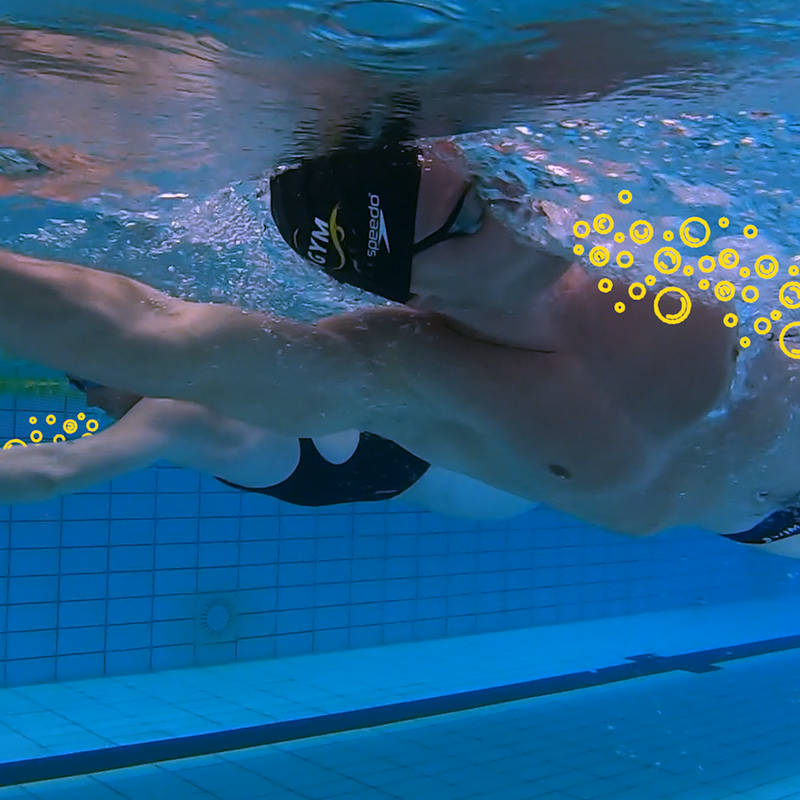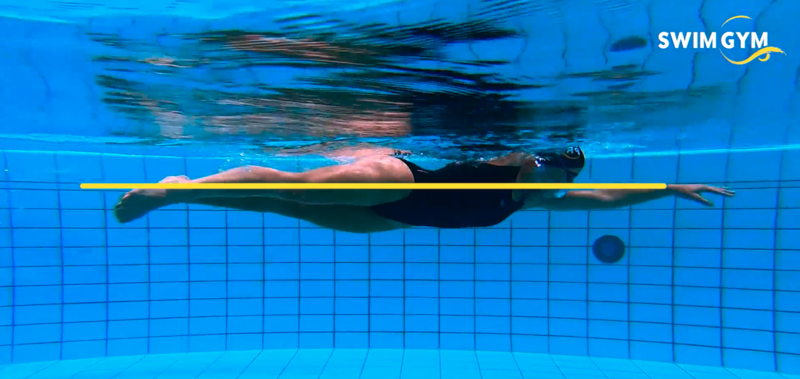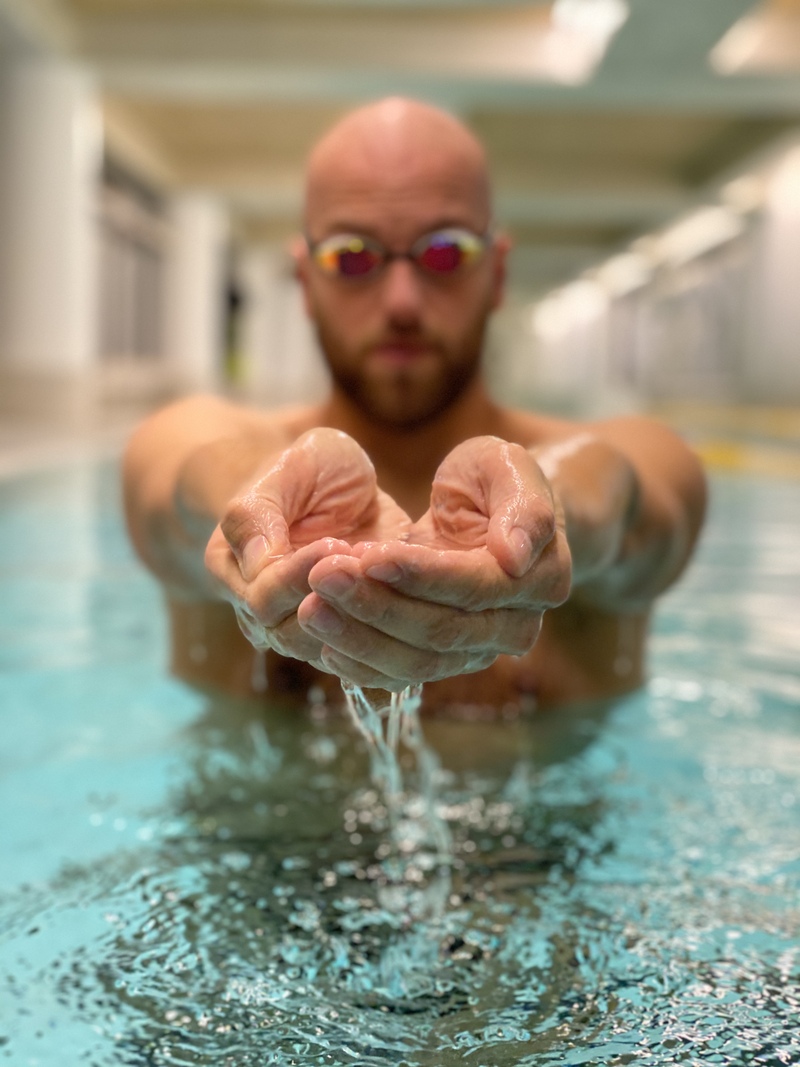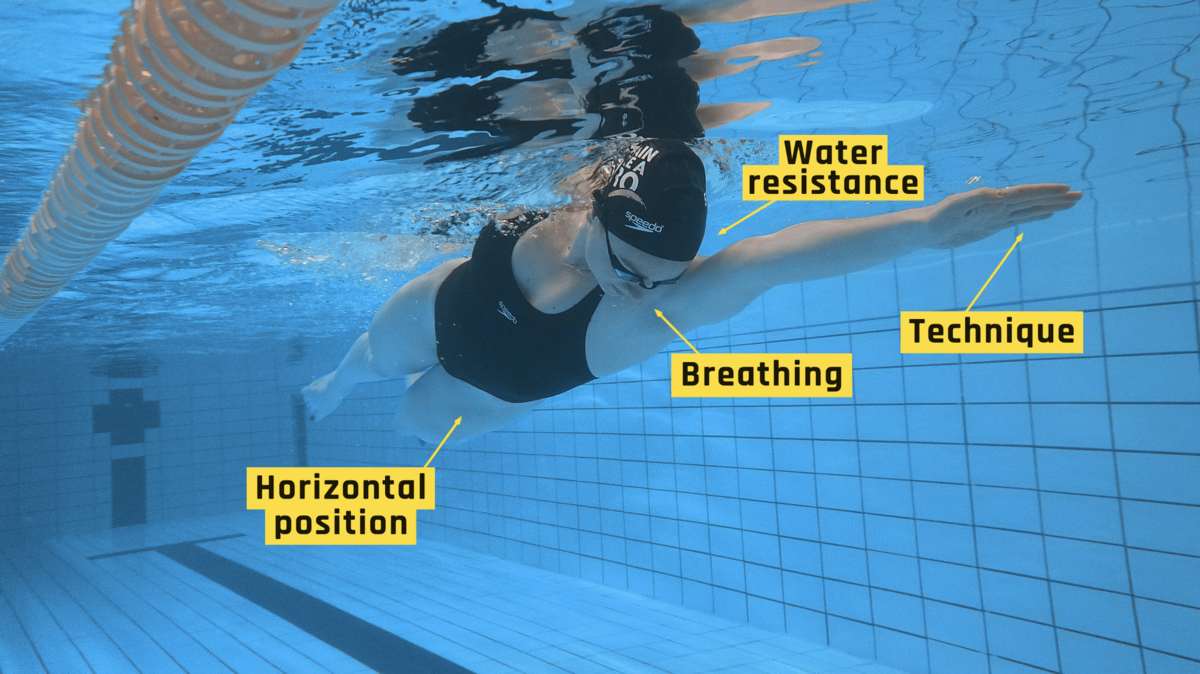Swimming blog - TRAINING 4 reasons why swimming is so challenging
Swimming uses almost all the muscles in your body, burns way more calories than running and cycling, and as a cherry on top: you can’t breathe freely! Swimming is very challenging sport. But on the bright side, it's also very good for your body and really fun when the technique starts to stick. What are the challenges, and how do we make it less off a hustle and exciting? We have got you covered.

The author of this blog is somewhat of a sport-oholic. He has played almost every sport available, from rugby to tennis, badminton to triathlon, waterpolo to cricket, rock climbing to lawn bowls, chess to ice skating and of course swimming. Every sport is unique and has its own idiosyncrasies. Each sport has its own challenges, physically and/or mentally. But why is swimming so challenging compared to the rest?
#1 Breathing
Think any other sport is tough, try it without breathing freely.
Undoubtably the thing that makes swimming so hard and tough is breathing. Or lack of it. Besides backstroke, during all other strokes, the face is in the water for a fair amount of time. This means you can’t breathe normally like in other sports. In fact, swimmers breathe about 30 to 40 times per minute which is way less than runners or cyclists. That’s not much. This puts an extra mental and physical load on the swimmer that land based sports simply don’t have.
Want to try it out? Run a 100 meters while holding you breath and you will see how difficult it is moving your body with a breathing restriction. Luckily, we have a breathing course of 4 weeks dedicated to breathing technique to get your breathing under control. The technique offered will help you swim more relaxed and for longer. Basically, you will learn how to control your breathing and train like a pro.
Restricted breathing is definitely a point in favor for swimming being tough as nails.

#2 Horizontal positioning
Except for bob-sledding and cross-country skiing biathlon where participants are stationery, swimming is the only sport that we do in a horizontal position. Being horizontal creates some particular problems to swimming.
We'll mention 4 particular issues with being horizontal:
1. You can’t see your arms or hands.
2. Your heart rate has dropped by an average of 20 beats per minute because you are lying flat.
3. Being in a horizontal position leads to proprioception difficulties. This means that your body has difficulty perceiving its own position in space. This is the reason why a lot of swimmers, good and bad, cross-over in the front of the stroke in freestyle.
4. Water changes the feedback loop, making it difficult to feel what we are doing when we to do it. So, for instance, it is not always possible to feel the water and how much pressure we are applying in the stroke.
So, as you can see, while lying down on a Sunday afternoon is great, it creates real difficulty for us in the pool. It means we have to practice a lot - and here is why drills are so important - to get used to how we feel in the water, where our hands and arms are in relation to the water and what to do when we know that they are in the right place. A great drill to start with is the Front or Mid Scull drill. But there are plenty more in our video library.

#3 Performed in water
Unlike most sports where you have your two feet are firmly planted on the earth, in swimming, we are floating and unsteady in the water. Water is almost 800 times as dense as air, which gives us a lot of resistance when we want to move through it. This requires a great deal of strength. However, the real difficulty is keeping our balance. We can easily move from side to side or up and down, but this is not our aim at all. We need a solid horizontal foundation on which we can apply force.
This horizontal foundation is achieved when the head, hips, legs and feet are positioned in one line. The biggest improvement is mostly provided by the head. Next swim session, change the position of your head, as you bring your head in the water and position it deeper you will notice the feet coming up, precisely where you want them to be. Play around with it for a while, your body is like a balance board. Are your legs sinking? Bring the head down and voila your feet will simulations come up bringing them into the horizontal line.

#4 Tormentingly technical
On top of everything else mentioned above, swimming is also a very technical sport. It is technical because of the points mentioned above: you cannot see yourself, you are unsteady, you are horizontal, and your face is in the water. In addition to this, the arms are moving independently of each other in freestyle and backstroke. This adds a co-ordination element to the mix. We have to learn how to co-ordinate the arms as each arm is doing something different. For example, as the left hand enters the water, the right hand is starting the catch and pull-through, two very different movements. While this is happening, you need to control your breath, rotate and kick – all at the same time. Not so easy peasy.
Coordinating the body in this manner requires brain power. You will notice however that it is possible to only focus one or two technique elements at a time, because the brain is unable to coordinate more than that. That’s why we always suggest taking a few weeks to focus on only one element of your technique, and when it becomes automatic adding a new element to the mix.
Eventually the elements will come together, and you’ll will move efficiently through the water. But this requires patience. No mean feat.

Swimming is a beautiful sport for its technical complexity. You will never stop learning and improving with swimming. However, this complexity makes swimming a real challenge.
So how long will it take to you learn how to swim from zero? Everyone is different, but patience is key. Progression will be noticeable, and every milestone will keep you going, just like it does for the professionals out there. So, go on and train like a pro to have the bragging rights of saying you participate in the beautiful sport called swimming.
Written by Michael Stolt
